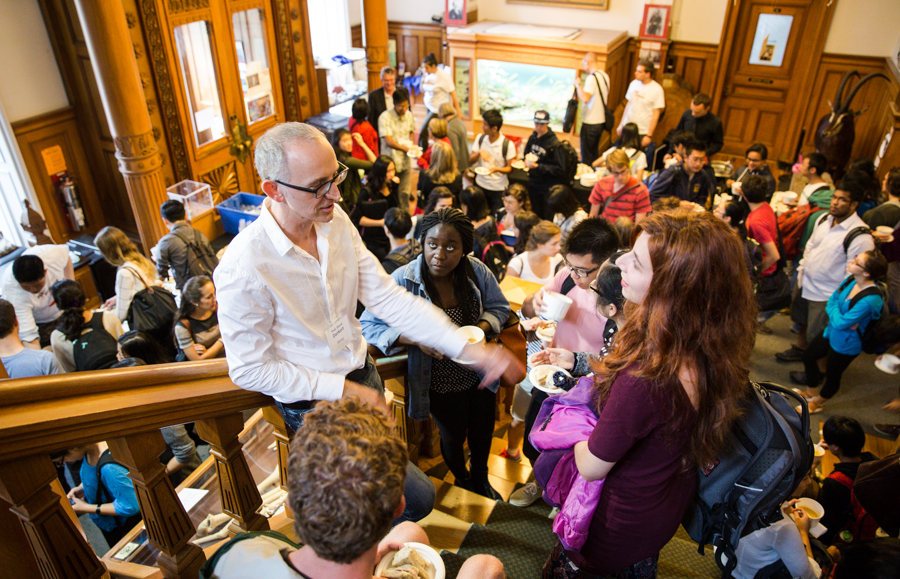Last Friday marked the end of the 18th edition of Soup and Science, a bi-annual week-long event aimed at exposing undergraduate students to research at McGill. The event took place every day at lunchtime, and hosted presentations from leading researchers at McGill. Throughout the week, select professors gave three-minute presentations of their research to hundreds of undergraduate science students crammed into the Redpath Museum. The presentations were followed by a quick question-and-answer session, in which students responded to questions to win t-shirts, and concluded with an opportunity to mingle with the presenters over soup and sandwiches.
Soup and Science is popular among students and professors alike. For Clare Lyle, a U0 physical sciences student, Soup and Science was “a really cool way to get to know what’s going on at McGill and what people are doing for research.” This sentiment was echoed by Tami Pereg-Barnea, an assistant professor in physics, who said Soup and Science provided an “informal way for students to approach professors,” something which is more difficult to do in a lecture-room setting where professors can seem inaccessible to students.
Pereg-Barnea admitted to the intimidating aura professors can project to their students. “Naturally, there is a feeling of distance [in a course setting] because I give them marks and assignments,” she said.
However, inaccessibility can also present itself in a physical form; many first year courses have more than 600 students, which means long queues, back-to-back lectures, and preoccupied professors. These can quickly become a physical barrier between student and professor. “I talked to my general chemistry professor after his presentation [at Soup and Science],” said Lyle. “It was the first time I got to talk to him.”
Soup and Science provides a rare opportunity on campus to directly network with professors in a casual setting. However, even this space can be inaccessible, with students being refused entry due to the limited seating capacity of the Redpath Museum.
“Naturally, there is a feeling of distance [in a course setting] because I give them marks and assignments.”
Tami Pereg-Barnea, assistant professor of physics
“I think there are too many people [at Soup and Science], but that’s the way things are. Sometimes its hard to approach the prof because there are ten students around them,” Alexandra Djait-Paulien, a U3 physiology student, told The Daily. Djait-Paulien found her research job by emailing professors, like the majority of undergraduate students, and said she thinks “[professors] are accessible, but you have to take the initiative.”
Many students were attracted by the brevity of the presentations. Pereg-Barnea, who presented again in this edition of Soup and Science, told The Daily that after presenting for the first time she “made many changes in the presentation” because of the three-minute time constraint. This time she took a different approach by explaining a single topic, superconductivity, in depth, rather than broadly discussing her research on theoretical condensed matter.
For Pereg-Barnea, the three minutes are just enough to get students curious about their research. “I think it’s a good compromise because I accept any invitation to speak to people who are interested in science, to show people what science is about and what research is.”
Many of the students at the event were first-year students curious about research at McGill and how to get involved. Although imperfect in terms of accessibility, Soup and Science continues to play a crucial role in introducing students to the research sphere at McGill, and will probably continue to overcrowd the Redpath Museum with science undergraduates for the foreseeable future. In the words of one student, “Science and free food is always good.”

